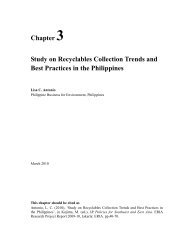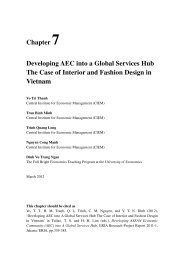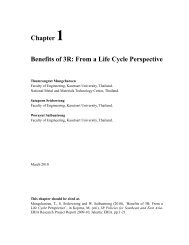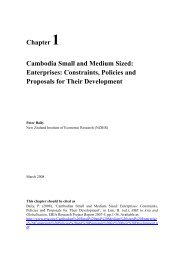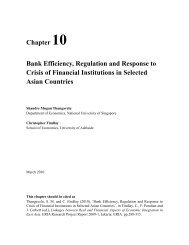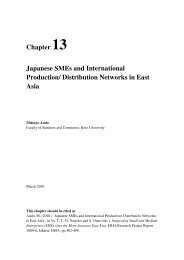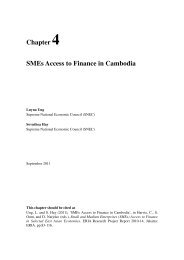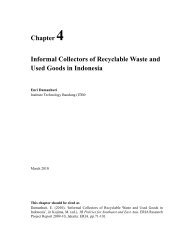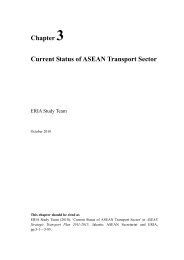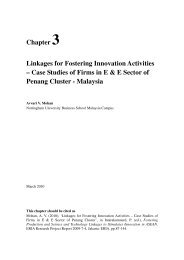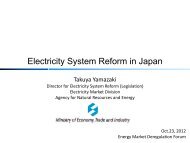Chapter 2 Cambodia - ERIA
Chapter 2 Cambodia - ERIA
Chapter 2 Cambodia - ERIA
You also want an ePaper? Increase the reach of your titles
YUMPU automatically turns print PDFs into web optimized ePapers that Google loves.
Market Access and Export DiversificationPriority and potential of export products: The government has identified nineteen products withgood export potential, most of which are in agriculture (rice, cashew nuts, cassava, maize, fish,livestock, rubber, silk, soybeans, fruits and vegetables—including organic, mango, palm,pepper—and wood products).• Rice production shows strong potential for a significant increase in yields and in volume.• Cassava is a promising crop, with yields recently reaching 23 tons/ha (volume similar toThailand’s and Viet Nam’s), but only 3 percent of cultivated land is devoted to cassava.• Rubber (with exports of around US$175 million in 2006) has posted accelerated growth in recentyears, with recent significant investment in new rubber plantations.• Fruits and vegetables are grown only on a small scale despite significant potential as an importsubstitute to support the increasing demand fueled by the tourism industry.• Silk, now accounting for US$10 million worth of exports, also has the potential to develop withthe expansion of the local tourism industry along with growing export potential.• Livestock, which has posted a steady stock increase of an average of 2 percent per annum overthe past decade, has strong export potential if many SPS issues are addressed.• Fisheries exports (around US$100 million worth annually of pond-reared fish such as catfish andtilapia estimated at between 500,000 tons and 1 million tons annually) are constrained by theabsence of SPS standards.Market Access: As an LDC, <strong>Cambodia</strong> benefits from preferential access through the GeneralSystem of Preferences (GSP) Schemes with the United States, Japan, and about twenty otherdeveloped countries. Moreover, <strong>Cambodia</strong> is a member of the WTO, ASEAN, and a number ofregional trade agreements between ASEAN and its development partners (e.g., China, India,Australia, and New Zealand).Everything But Arms (EBA) initiative: The EU is a major destination for <strong>Cambodia</strong>’s riceexports. Preferential access to the EU is provided under the EBA initiative launched by the EC in2001 to replace the previous GSP system. Under the EBA initiative, most products from LDCs,including <strong>Cambodia</strong>, get duty-free access to European markets with greater predictability.115



